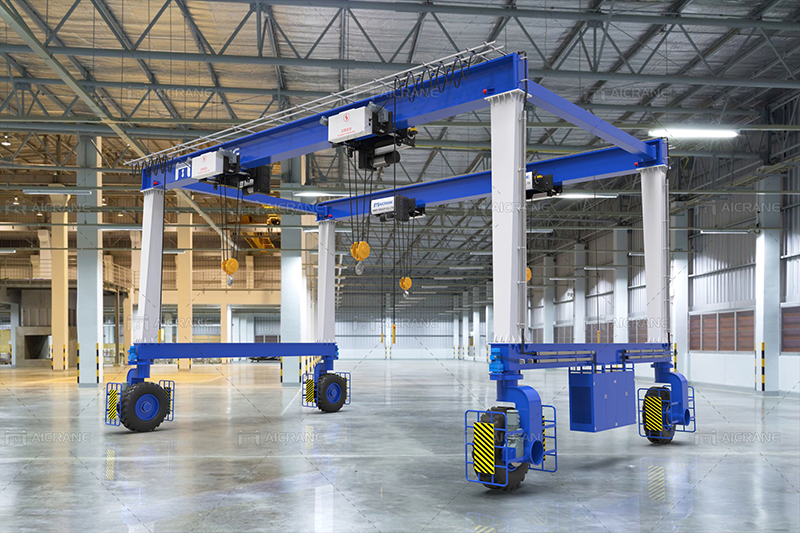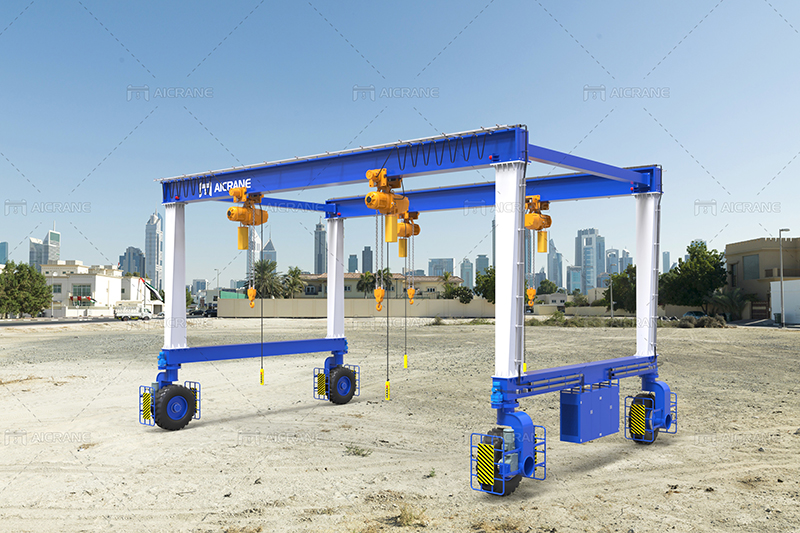Rubber Tyred Gantry Cranes (RTG) have emerged as indispensable components in modern container handling operations, providing efficiency and flexibility in busy ports and terminals. These towering machines play a crucial role in lifting and moving heavy containers with precision and speed. To comprehend the significance of these machines, it’s essential to delve into the detailed specifications that make them such reliable and powerful tools in the realm of material handling.

Capacity and Lifting Height:
RTGs are designed to handle a wide range of container weights, typically ranging from 30 to 65 tons. The lifting height of these gantry cranes is a critical specification that defines their versatility. RTGs are engineered to reach impressive lifting heights, often exceeding 40 meters, allowing them to stack containers with efficiency and optimize the use of available space in storage yards.
Span and Outreach:
The span and outreach of an RTG are crucial factors in determining its operational capabilities. The span refers to the distance between the two legs of the crane, while outreach denotes the horizontal reach of the crane’s trolley. RTGs are designed with adjustable spans to accommodate various container stacking configurations. The outreach capability ensures that the crane can efficiently reach containers located at different distances within the storage yard, enhancing its flexibility and productivity.
Wheel Configuration:
RTGs are equipped with rubber tires, allowing them to traverse container yards smoothly. The wheel configuration is a key specification that influences the crane’s maneuverability and load-bearing capacity. Common configurations include 8×4 and 16×4, indicating the number of wheels and their arrangement. The rubber tires not only provide mobility but also minimize the impact on the ground, making RTGs suitable for a variety of terrains.

Power Supply:
RTGs can be powered by various sources, with the two main options being diesel and electricity. Diesel-powered RTGs are ideal for locations where a stable power supply is challenging to maintain, providing autonomy and flexibility. On the other hand, electric rubber tired gantry cranes are more environmentally friendly and cost-effective in areas with reliable power infrastructure. Some modern RTGs even feature hybrid power systems, combining the advantages of both diesel and electric sources.
Automation and Control Systems:
The evolution of technology has introduced automation to the world of container handling. RTGs can be equipped with advanced control systems and automation features, allowing for precise and efficient container movements. Automated RTGs can optimize container stacking, reduce operational errors, and enhance overall productivity. These systems often include anti-sway technology, collision avoidance, and remote monitoring capabilities, contributing to a safer and more streamlined container handling process.
Maintenance and Safety Features:
The reliability of an RTG is closely tied to its maintenance and safety features. These cranes are designed with user-friendly maintenance access points, facilitating routine inspections and repairs. Safety features such as overload protection, emergency braking systems, and advanced diagnostics contribute to a secure working environment. Regular maintenance ensures the longevity of the crane and minimizes downtime, allowing for continuous and efficient container handling operations.
Environmental Considerations:
With an increased focus on sustainability, RTG manufacturers are incorporating eco-friendly features into their designs. Energy-efficient systems, emission controls for diesel-powered RTGs, and the use of alternative fuels contribute to reducing the environmental impact of these machines. Some RTGs are also designed with regenerative energy systems, capturing and utilizing energy during braking to improve overall efficiency.
Conclusion:
In conclusion, the rubber tyred gantry crane specifications underscore their pivotal role in the dynamic world of container handling. From their impressive lifting capacities and heights to their advanced automation and safety features, these cranes are engineered to meet the demanding requirements of modern ports and terminals. As technology continues to advance, the specifications of RTGs will likely evolve, pushing the boundaries of efficiency, sustainability, and safety in container handling operations.
